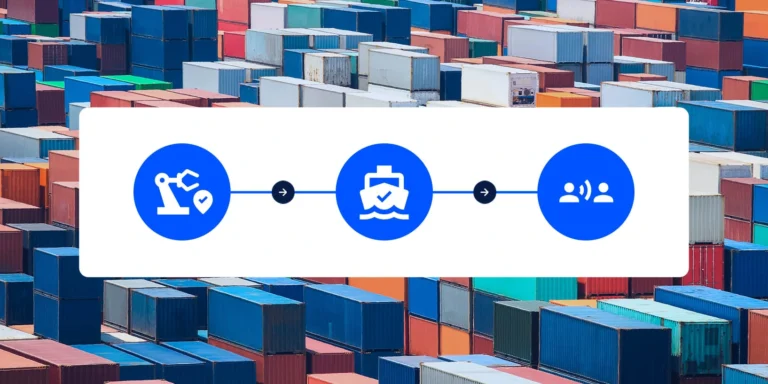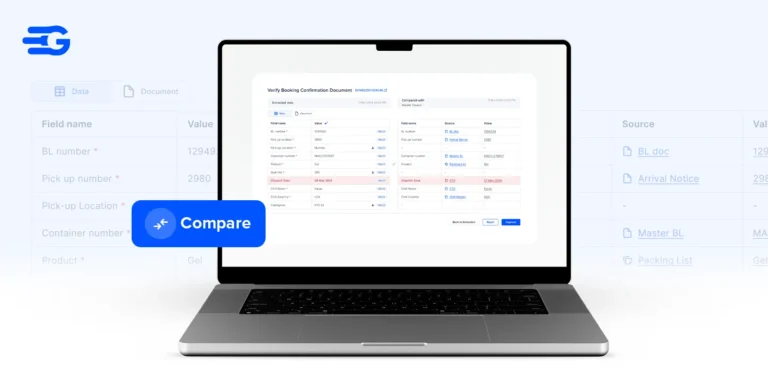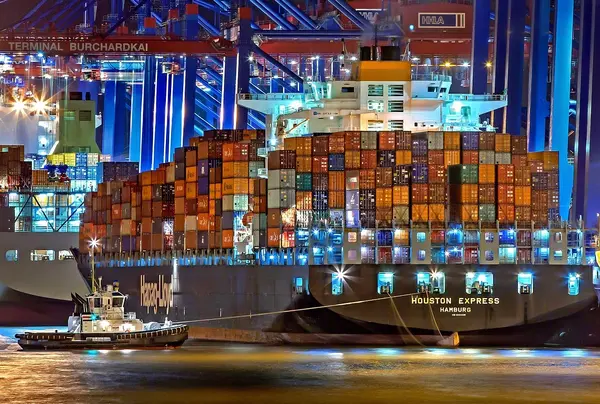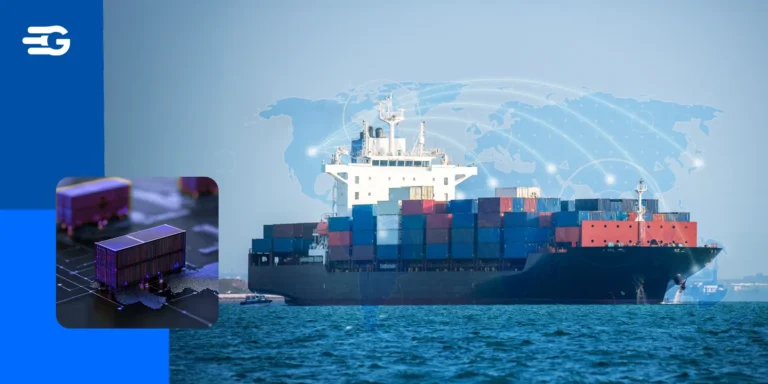Zero‑Touch Order Management: How to Build Your Autonomous Supply Chain
In today’s fast-paced market, companies need order processes that run smoothly from the moment a customer clicks “submit” to the moment a package arrives. When each step in between happens automatically, teams spend less time solving problems and more time on strategic growth. Zero-touch order management means that as soon as an order enters the system, the platform takes over—checking inventory, booking carriers, generating invoices, and sending updates—without manual effort. Human intervention only happens if something goes wrong. Below, we’ll explain what zero-touch order management is, why it matters, and how any company can set it up step by step.
What Zero-Touch Order Management Means
Zero-touch order management refers to a process where orders move automatically through every stage, from order capture to final delivery.
Order Capture and Centralization
Orders from e-commerce sites, B2B portals, ERP systems, and EDI feeds appear in a unified dashboard rather than in separate silos. All incoming orders are collected in one place.
Automated Inventory Check
The system pulls live stock levels from all warehouses and third-party partners. As soon as an order is placed, availability is confirmed automatically.
Automatic Fulfillment Routing
Based on pre-set rules—such as location, cost, and transit time—the system decides which warehouse or supplier should fulfill each order without requiring manual approval.
Carrier Booking and Label Generation
After routing, the platform chooses the best carrier, books the shipment, and prints labels. This happens without any team member typing in rates or contacting carriers by phone or email.
Invoice Creation and Billing
Once the carrier confirms pickup or delivery, the platform automatically generates and sends invoices to customers. Accounting systems receive billing data in real time without manual entry.
Real-Time Updates and Exception Handling
Every order status update—“order confirmed,” “picked,” “in transit,” “delivered”—sends automatically to both internal teams and customers. If something goes off track, exception workflows notify the right person with clear instructions.
In a true zero-touch setup, teams only need to step in for high-level issues, such as unexpected stockouts or customs holds. For most routine orders, the system takes care of every detail.
Why Zero-Touch Order Management Matters
Speed and Scalability
Manual steps create bottlenecks. With zero-touch management, orders flow faster because confirmations, allocations, and carrier bookings happen instantly. This allows businesses to scale during peak seasons or when expanding to new markets without adding headcount for order processing.
Improved Accuracy
Manual data entry often leads to typos, wrong SKUs, or misrouted shipments. A zero-touch system integrates directly with warehouse and partner data, ensuring accurate inventory levels, correct product details, and valid customer information. This cuts down on mis-picks, returns, and billing discrepancies.
Lower Operational Costs
Every manual touchpoint consumes time and resources. By automating routine tasks, staff can focus on higher-value activities like supplier negotiations or customer relationship management. Automated rate shopping also finds the most cost-effective carrier option for each shipment, reducing freight spend.
Enhanced Customer Experience
Customers expect instant confirmation emails, accurate delivery estimates, and proactive updates if anything changes. Automated notifications keep customers informed at every step, which builds trust and reduces the volume of inbound support inquiries.
Data-Driven Insights and Continuous Improvement
Each automated step generates data points—order lead times, carrier performance metrics, warehouse transit times, and billing exceptions. Dashboards and reports make trends and bottlenecks visible. Teams can analyze these insights to optimize procurement, routing, and inventory strategies over time.
Key Components of a Zero-Touch System
To build a hands-off order flow, companies need interconnected systems that can make decisions. The essential components are:
- Unified Order Dashboard
This central hub brings orders from all sales channels—online stores, B2B portals, ERP systems, and EDI feeds—into a single interface. Instead of viewing orders scattered across different platforms, teams apply a consistent set of fulfillment rules in one place. For example, orders destined for the same region can be routed to the nearest warehouse automatically. - Real-Time Inventory Integration
By connecting to warehouse management systems (WMS) or third-party logistics (3PL) providers via API or EDI, the platform sees live stock levels. When an order is placed, availability is confirmed immediately. If one location is out of stock, the system reroutes the order to another warehouse that has enough supply, with no manual checks needed. - Control Tower with Predictive Analytics
The control tower acts as the brain of the operation. It aggregates data from the order dashboard, the WMS, and external sources such as port schedules and weather feeds. Using machine learning, the control tower can predict potential disruptions—like port congestion or extreme weather—and reroute shipments proactively. It also compares rates across carriers, taking into account cost, transit time, and sustainability goals. - Transportation Management System (TMS) Integration
A TMS enables automated carrier selection, rating, and booking. Once an order is assigned to a warehouse, the TMS automatically chooses the carrier based on predefined preferences: lowest cost for standard orders, fastest transit for urgent shipments, or lowest carbon footprint for sustainability initiatives. After booking, labels and shipping documents are generated and relayed back to the order dashboard. - Automated Procurement and Replenishment
When inventory dips below a set threshold, the system triggers purchase orders to suppliers. AI-driven demand forecasting—using historical sales data, seasonal trends, and current order velocity—adjusts reorder quantities dynamically. This keeps stock levels optimal without manual intervention. - Automated Billing and Invoicing
When a carrier confirms pickup or delivery, the invoicing engine generates the invoice with correct rates, taxes, and duties. If carrier invoices match expected costs, they post directly to the accounting system. Any discrepancies generate an exception ticket for human review, but routine invoices flow through automatically. - Notifications and Exception Workflows
Automated notifications are sent at every milestone: “order received,” “order routed to warehouse,” “carrier booked,” “in transit,” “out for delivery,” and “delivered.” Exception rules—such as a shipment being held in port for too long—trigger alerts to the logistics or operations team. Automated workflows can reroute shipments, split orders, or escalate to a manager only when truly needed.
Step-by-Step Guide to Setting Up Zero-Touch Order Management
Map Existing Order Processes
List every step from order placement through delivery, noting which systems and teams are involved. Identify manual handoffs, data re-entries, and approval points. Understanding current workflows reveals where GoComet’s automation can replace manual effort.
Centralize Orders in the Dashboard
Connect each sales channel—online store, B2B portal, ERP, or EDI feed—to GoComet’s unified order dashboard. With all orders in one place, define simple rules. For example, orders to postal code 10001 route to Warehouse A automatically. If stock is unavailable, GoComet splits the order or backorders it based on your priority settings.
Set Up Real-Time Inventory Feeds
Build API or EDI connections between GoComet’s dashboard and your warehouse or 3PL systems. Ensure inventory data updates at least every 15 minutes. That way, GoComet always confirms availability and prevents overselling or unnecessary cancellations.
Configure Control Tower Rules
Define decision logic for routing and carrier selection within GoComet’s Control Tower. Decide whether to prioritize cost, speed, or sustainability. Add external data feeds—port schedules, weather alerts, and customs status—so the Control Tower identifies potential issues early. For example, if a port delay exceeds 48 hours, GoComet automatically switches that shipment to air freight or redirects it to another port.
Integrate or Enable the TMS
If you already use a TMS, connect it to GoComet so orders flow directly into the booking queue. If not, activate GoComet’s built-in TMS module. Configure carrier rules, transit-time thresholds, and cost limits. When an order is routed, GoComet’s TMS books the carrier, assigns a tracking number, and feeds that information back to the dashboard.
Automate Procurement and Replenishment
In GoComet’s procurement module, set reorder points for each SKU at every warehouse. Define supplier preferences, minimum order quantities, and lead times. When inventory dips below the threshold, GoComet automatically generates a purchase order and sends it to the supplier. Once the order is received and processed in the warehouse, inventory updates occur automatically in GoComet.
Enable Invoice Automation
Activate GoComet’s invoice module and integrate it with carrier billing feeds via API or EDI. Define matching rules—acceptable variances in freight cost or fuel surcharges. When carrier invoices align with expected costs, they post directly to your accounting system. Any exceptions generate a ticket in GoComet’s dashboard, notifying the finance team for manual review.
Design Notifications and Exception Workflows
Set up automated notifications for each order milestone in GoComet: confirmation, picking started, carrier booked, in transit, out for delivery, and delivered. Establish rules for exceptions—such as customs holds or delivery delays over 48 hours. For each exception, specify GoComet’s automated action: reroute the shipment, send a customer alert, or escalate to the operations manager.
Define Roles and Train Teams
Even with automation, human oversight remains important. Assign clear roles:
Operations Lead monitors GoComet’s Control Tower dashboard for alerts and handles escalations.
Procurement Specialist reviews high-value or unusual purchase orders before they send.
Finance Team handles only flagged invoices rather than reconciling every single bill.
Provide training on how GoComet’s modules interact, how to read dashboards, and how to update rules as business needs evolve. Encourage teams to document exceptions and their resolutions so continuous improvement is possible.
Monitor Key Metrics and Iterate
Track metrics such as:
- Order Cycle Time: Time from order placement to delivery.
- Percentage of Orders Requiring Manual Intervention: Aim to reduce this steadily.
- On-Time Delivery Rate: Percentage of orders delivered by the promised date.
- Cost Per Order: Total labor, freight, and exception costs divided by the number of orders.
Review these metrics weekly or monthly in GoComet’s reporting dashboards. If certain warehouses show high error rates, adjust system rules or schedule additional training. If a specific carrier underperforms, update carrier preferences. Continuous measurement and refinement keep the zero-touch process improving.
Benefits Companies Will See
Faster Order Fulfillment
Automated routing and instant carrier bookings enable orders to move from placement to dispatch in record time.
Reduced Labor Costs
By automating tasks such as rate shopping, label printing, and invoice posting, teams can focus on strategic initiatives instead of repetitive work.
Higher Accuracy
Direct integrations reduce data errors. Inventory levels, customer details, and carrier rates update automatically, resulting in fewer returns and billing disputes.
Improved Customer Satisfaction
Automated notifications keep customers informed throughout the order lifecycle. They receive proactive updates about shipping status and estimated delivery times, leading to fewer support calls and higher trust.
Scalable Operations
The system can handle increased order volumes—during peak seasons or geographic expansion—without requiring additional headcount.
Actionable Insights
Dashboards reveal trends in product demand, carrier performance, and inventory turnover. Teams can use these insights to renegotiate carrier contracts, optimize warehouse footprints, and refine stock-replenishment strategies.
Risk Reduction
By incorporating external data—such as port schedules and weather forecasts—the control tower can reroute shipments before issues become critical, minimizing delivery delays and customer impact.
Tips for a Smooth Transition
Begin your transition by rolling out features in phases—first centralize orders and automate basic routing, then add real-time inventory integration, TMS routing, and finally invoice automation—so teams can adapt gradually. Before launching, clean up your data by standardizing SKUs, verifying customer addresses, and confirming product dimensions and weights to minimize errors. Set realistic goals, such as processing 50 percent of orders without manual touches in the first month and 75 percent by month three, to keep the project on track. Document every exception by noting why human intervention was needed, then review these weekly to adjust rules or provide additional training. Finally, communicate progress with all stakeholders by sharing improvements in order cycle times, error rates, and customer satisfaction so teams see the value and become champions of the new process.
Zero-touch order management empowers companies to move from reactive operations where teams chase issues, to proactive operations where the platform handles most tasks and alerts teams only when necessary. When orders truly flow automatically from placement to delivery, efficiency soars, costs drop, and customer satisfaction climbs. By following the steps outlined above, companies can build an autonomous supply chain that drives sustainable growth and delivers exceptional customer experiences.






